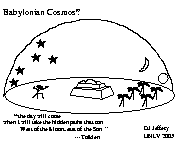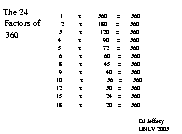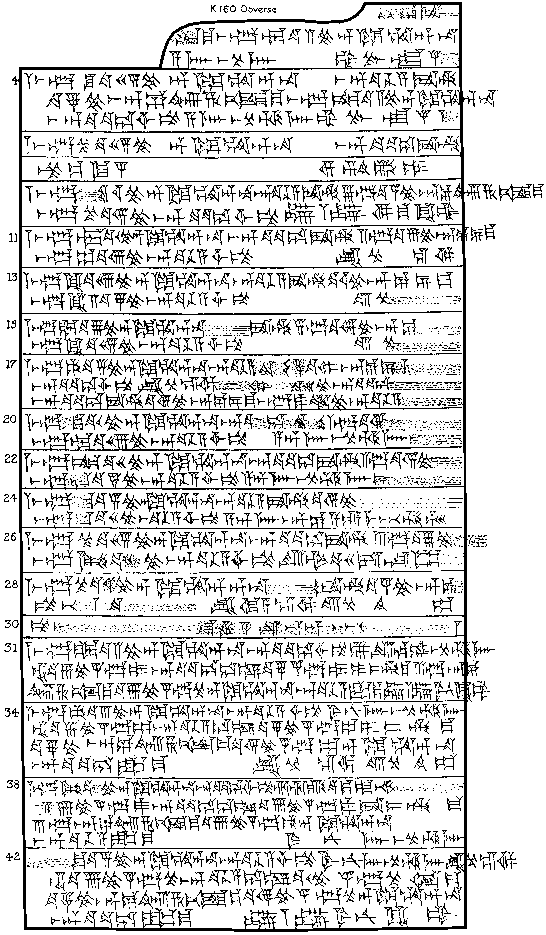Babylonian Astronomy
-
Mesopotamia and Angular Measurement
- Mesopotamian
Mathematics by Duncan J. Melville of St. Lawrence University
in Canton Ohio.
- Minnesota
University of Minnesota cuneiform transcriptions.
- The Sumerian Language Page
by John A. Halloran
- The Ziggurat
of Ur-Nammu Webpage But it's been protected from the
world now, and so is pretty much useless.
-
Internet History of Mesopotamia by
John C. Sanders & Oriental Institute, University of Chicago.
This site is a part of the
Internet Ancient History Sourcebook of Paul Halsall of
Fordham University.
It's clear about text copyright issues, but not image ones.
- Mesopotamia
Links by---by Costume Supercenter.com.
Images
Many of the links below are broken. The broken links are
to images I am longer certain that I can freely display:
they may be copyrighted or should at least have proper credit.
The unbroken linked images are permitted to be posted I believe.
My own images can be used for personal or educational use with
credit and without further permission.
-
 Babylonian Cosmos? A cartoon of what some Babylonians may have
thought.
Babylonian Cosmos? A cartoon of what some Babylonians may have
thought.
-
 Cuneiform numerals.
Cuneiform numerals.
-
 Pythagorean triples and the Pythagorean theorem.
Pythagorean triples and the Pythagorean theorem.
-
 Factors of 360 degrees.
Factors of 360 degrees.
The late Babylonian astronomers
divided the circle into 360 degrees. No one knows why.
This division isn't fully consistent with the sexagesimal system:
they should have divided into 60 degrees.
They may have done so because the Sun moves about 1/360 of
a circle per day on the sky.
Of course, it is actually more like 1/365.25 of a circle.
But 360 is a much nicer number with so many factors that
it makes division easy.
-

The obverse of a copy of Venus Tablet of the reign of
King Ammizduga of Babylon (1550--1530 BC according to one
chronology).
-
 Cuneiform tablet.
Cuneiform tablet.
This just a sample from the U.
of Minnesota page below: seems pretty hard to read.
It's a receipt for 5 sheep from Abbasaga.
Credit: material adapted from
Cuneiform Inscriptions of the University of Minnesota Libraries
web site ; Reproduced by permission for 2003/2004 academic year;
download site:
UM 5.
- Plimpton 322 The most famous
Babylonian mathematical tablet. From circa 1900--1600 BC,
it strongly suggests that the Babylonian mathematicians had a procedure
for calculating Pythagorean triples: i.e., integer numbers that
satisfy Pythagoras's theoerem
(Ne-36--40).
Their investigation of Pythagorean triples started from
their knowledge of the Pythagorean theorem---maybe 1400 years
before Pythagoras.
I would strongly like to show this image, but the copyright
status is unclear. It could have been digitized from
an out-of-copyright book since it is a famous old tablet.
Download site
David Joyce's Plimpton 322 site.
- Plimpton 322 A bigger image.
Download site
Math in the Media site of the American Mathematical
Society. They claim blanket copyright
and forbid more than temporary copying.
-
Plimpton 322 at Columbia. A good quality image.
The Plimpton 322 page is part of Columbia's
Collections & Treasures site They do permit educational use
with proper credit, but their permission is obscurely written.
It seems that public posting is ruled out. This is such
a valuable image that one should just go to their site to see it.
- Cuneiform The
development from pictographic script.
- Cuneiform Sample 1
No context available at the download site. It's just an example.
Credit: ??? (believed to be public domain);
download site:
St. Andrews History of Mathematics Archive.
- Babylonian Cuneiform Sexagesimal Numerals
As it's a sexagesimal system, 60 is just 1 all over again.
Credit: ???? (believed to be public domain);
download site:
St. Andrews History of Mathematics Archive.
-
A Venus Tablet of King Ammizaduga ????
- A Sumerian Proverb
See the Sumerian
Language page for a translation. But it amounts to ``it's
tough to be poor.''
- Ziggurat of Ur-Nammu
First built by Ur-Nammu (Sumerian?) in Ur circa 2113-2096 BC.
Restored by the last Neo-Babylonian king Nabonidus (556-539 BC).
Best preserved of all Ziggurat it now stands 11 m and has
a courtyard base of 62.5 m x 43 m. Erected to the Moon goddess
Nanna. An example of the astral connections of Mesopotamian
religion.
- Aerial View of Ziggurat
of Ur-Nammu
 Babylonian Cosmos? A cartoon of what some Babylonians may have
thought.
Babylonian Cosmos? A cartoon of what some Babylonians may have
thought.
 Cuneiform numerals.
Cuneiform numerals.
 Pythagorean triples and the Pythagorean theorem.
Pythagorean triples and the Pythagorean theorem.
 Factors of 360 degrees.
Factors of 360 degrees.

 Cuneiform tablet.
Cuneiform tablet.